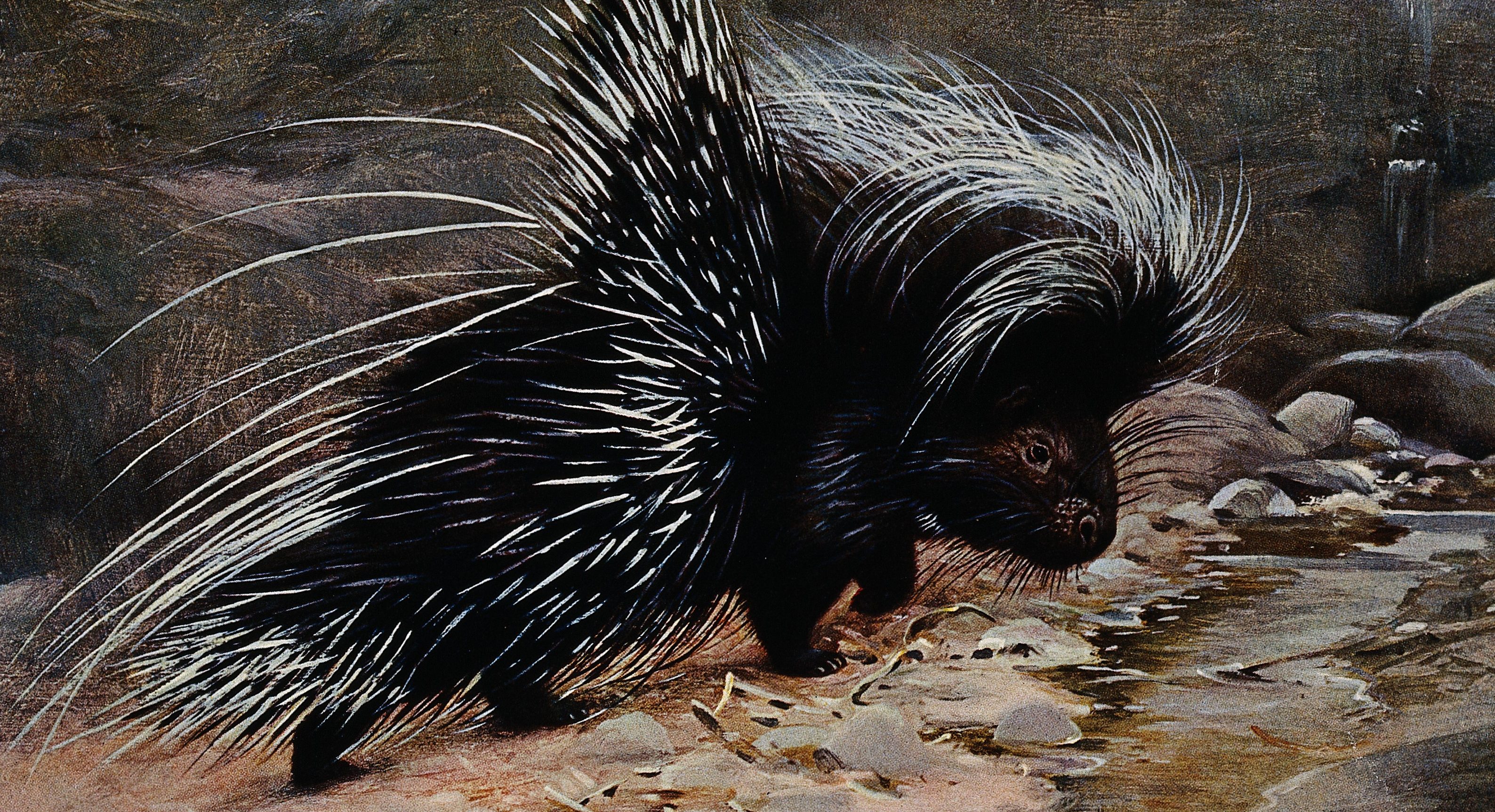
08 Feb The Right Tool
Much as other porcupines, an Italian porcupine will be generous with his quills; one has only to come near and he will discharge several. Those who deal in book-binding, in paper-mounting and art conservation, will be grateful indeed for so fine a gift. Must it be an Italian porcupine? So I believe. But one need not go to Italy to meet one of these Hystricidae. They are reasonably plentiful in Libya, too, and elsewhere in North Africa, and might even be encountered while visiting Niger, or Chad.
This is the “Italian,” or “crested” porcupine (Hystrix cristata), which most resembles a comet, with his little compressed nugget of a head and continuously expanding coma, or tail; but with the neck and collar quills standing up to present the crest feature. Should gentle reader have, perchance, a garden in Sicily, he may be especially favoured. He need not approach the creature himself. Local dogs and other fauna will do this for him; he need only collect the quills where they fall, among the flowers.
These little harpoons, or quills, are gorgeous in their light and dark bands of a tortoise-shell stiffness and texture, while darker in hue; they will bear the closest sculptural examination. The animal has gone to trouble to make them, ingesting calcium by gnawing on bones, while sharpening his impressive incisors. Those to the fore — thicker, longer, looser — are most worth having. Those to the rear are more firmly attached; are thin, hollow, and shaken in the mass to emit a menacing, hissing rattle, meant to contribute to a dog’s education.
Once retrieved, these fore-quills will be found quite various in their shapes, ends, and sizes, from fine points to subtly flattened stubs, with shafts satisfying to the fingers. One uses them to tamp curls and corners upon carefully shaped drops of glue; they will intrude wisely into edges recessed against raised borderings. They will compress with a precise amount of force. One quill, or another, will answer to each need.
But these are makeshifts compared with the fine tooling of gold leaf; with working colour over the gold; or fixing minute particles of pigment in a consolidant. Whether in the conservation, or in the creation of an illuminated manuscript, icon, or altarpiece — should the job happen to require skill — the porcupine quill comes into its own.
It is true, that one could use toothpicks instead, as I was doing last night while repairing the pasteboard on my copy of Whistler’s Gentle Art of Making Enemies; along with the (excessively hard) spooned end of a tiny metal tool, for a spatula. But toothpicks are crude, rough, stupidly absorbent, and identical, one with another. I longed to sneak into my grandfather’s illumination studio, and lift several items from his desk quiver. Alas, they are now forty years removed from my thieving touch.
By David Warren, lecturer in religion and literature, St Philip’s Seminary

